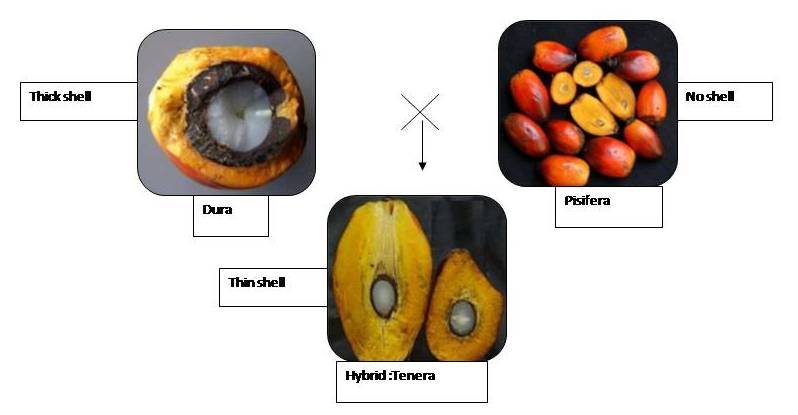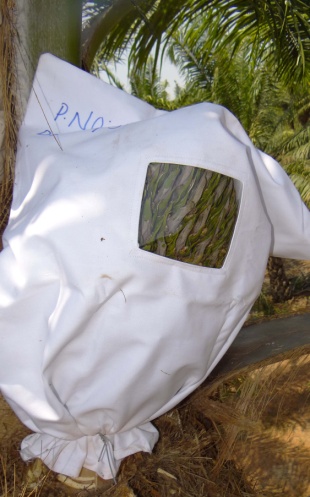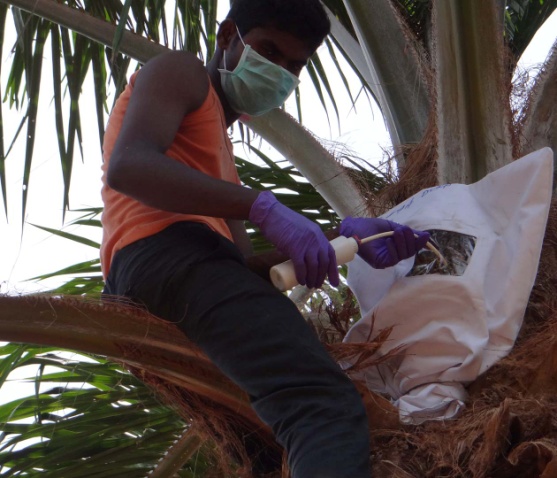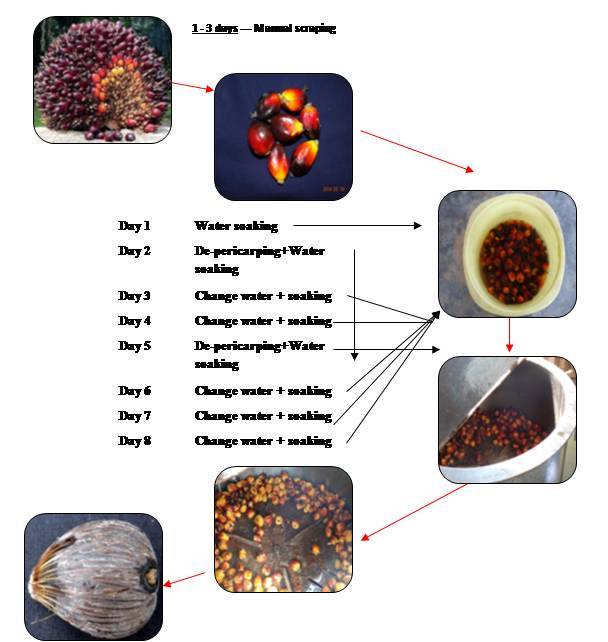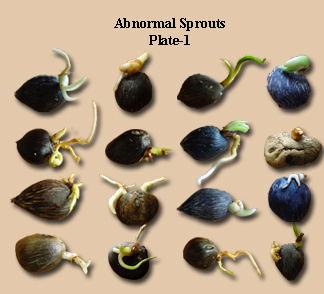तेल ताड (एलियस गिनेन्सिस जैक) के हाइब्रिड बीज उत्पादन की तकनीक
Oil palm (Elaeis guineensis Jacq.) is a perennial crop and cultivation has been expanded rapidly in recent years. It is the highest edible oil yielding crop giving up to 5-6 tonnes of oil per ha per year. This crop offers viable solution for meeting the ever increasing shortage of vegetable oils in the country.
In order to harness the full potential of oil palm, Government of India is keen in increasing the area under oil palm to a tune of 2 million ha by 2025. To achieve this proposed target, nearly twenty lakh germinated seeds need to be produced per year. Public and private seed gardens have been encouraged and are engaged in this process.
Mesocarp is the main flesh where from the consumable oil is extracted. More mesocarp leads to more oil. Hybrid seed production normally consists of crossing two elite inbred strains having better characters which ultimately boost the yield. In oil palm, as such no variety or inbred are available; instead two different fruit forms are crossed to get a hybrid.
Fruits are categorised based on the fruit shell thickness and mesocarp content. The mother palm fruit form is called as “Dura” having thick shell (about 2-8 mm) with low to medium mesocarp and male parent fruit form is called as “Pisifera” having no shell (shell-less) and are normally female sterile.
The cross between these two is a hybrid called as “Tenera” having thin shell (0.5-4.0 mm) with medium to high mesocarp. Oil palm is monoecious in nature where male and female inflorescences are produced in cycle separately on the same palm.
Fig 1. Oil palm fruit types
Procedural sequence for hybrid seed production of oil palm
- Preparation of male and female inflorescence
- Pollination
- Harvesting
- Seed processing
Preparation of male and female inflorescence in oil palm:
Male inflorescence should be bagged minimum five days before the anthesis. Remove the spathe carefully and spray the inflorescence with diluted 40% formalin to kill any foreign pollen and insects. The inflorescence is covered with a bag made of terylene cloth having thick white polythene window to observe the inflorescence from the ground.
The bag should be tied properly in such a way that no insect can enter inside. At the 2nd or 3rd day of the opening of the male flowers, the inflorescence is cut and dried in shade along with bag for five hours. Maximum pollen shedding takes place in 2-3 days following the anthesis and production ceases within 5 days. However, viability of late produced pollen is low.
Pollen is collected by shaking the inflorescence in the bag. Such pollen is kept in an oven at 40oC for 2 to 3 hours. Then, sieved and kept in desiccators. This pollen can be used for nearly 30 days when stored at room temperature.
The female inflorescence should also be bagged at least a week before the first flower opening to avoid the foreign pollen contamination. Constant monitoring of the palm while flowering is must.
The bag quality is same as male. Spathe should be removed carefully and spray the inflorescence with diluted 40% formalin to kill any foreign pollen and insects. The bag should be tied properly around the peduncle and the mouth of the bag is tied over the cotton lint with a strong thread in such a way that the pollinating weevil should not enter inside the bag.
Fig 2. Bagging of inflorescence Fig 3. Pollination
Pollination in oil palm:
Pollination is done after the first opening of the female flower (normally flower opens from bottom to top in the inflorescence). Through the white polythene cover in the bag, selected pollen is blown.
Selected pollen is placed in a test tube carrying a cork fitted with two L-shaped glass tubes plugged with cotton wool. One L-shaped tube end should be pierced through the poly window of the bag and air should be blown from another end, articulated in such a way that pollen should reach all the flowers.
The receptivity of the flowers is upto 3 days; hence the pollination should be done for consecutive three days to ensure pollination of all flowers. Normally, early morning hours are desirable for pollination and for all practical purposes pollination may be completed before 10 am.
Harvesting of oil palm:
The pollinated inflorescence, upon the formation of fruits is called Fresh Fruit Bunch (FFB), which is ovoid and may be 50 cm in length and 35 cm in breadth. Normal time for the ripening of fruits is five to six months from the date of pollination. The indication of maturity of fruit bunch is that 5-10 fruits fall on the ground. Harvest the whole bunch.
Seed Processing in oil palm:
Separation of the fruits from bunch is a difficult task. Fruits need to be removed within a short time (4-5 days) or else removal is cumbersome. Such individual fruits are soaked in the water for the removal of exo and mesocarp, which is must for seed separation. This process takes 7-8 days water soaking along with one or two mechanical de-pericarping (Fig 4).
Fig 4. Extraction of oil palm seed
| Day 1 | Water soaking |
| Day 2 | De-pericarping+Water soaking |
| Day 3 | Change water + soaking |
| Day 4 | Change water + soaking |
| Day 5 | De-pericarping+Water soaking |
| Day 6 | Change water + soaking |
| Day 7 | Change water + soaking |
| Day 8 | Change water + soaking |
Such oil palm seed devoid of mesocarp is called nut. This nut is capable of giving the progeny but takes six months to years for germination because of the dormancy.
The dormancy is categorised as mechanical because of presence of operculum plug right above the embryo. Hence, artificial dormancy breaking mechanism is being practiced. Among available methods, dry heat treatment is popular in the seed gardens of India. The resources (time and energy) needed for this process is more (Fig 5).
Fig 5. Oil palm Seed processing
Seed is dried for nearly 9 days or more to bring the seed moisture content to 18%
After 15 days, sorting is done to pick up well grown seeds having well differentiated plumule and radicle. Germinated seeds that show any abnormality (Fig 7) whatsoever may be are eliminated during the process. Normal germinated seeds (Fig 6) will be planted in the nursery. Thus, oil palm hybrid seed production is a difficult as well as highly skilled work.
Fig 6. Normally germinated seeds Fig 7.Abnormally germinated seeds
Authors:
G.Ravichandran, P.Murugesan, R.K.Mathur, K.Sunil Kumar, P.Naveen Kumar, D.Ramajayam and B.Kalyan Babu
Indian Institute of Oil Palm Research
Pedavegi ,West Godavari District,
Andhra Pradesh, Pincode- 534 450,India
Email:

